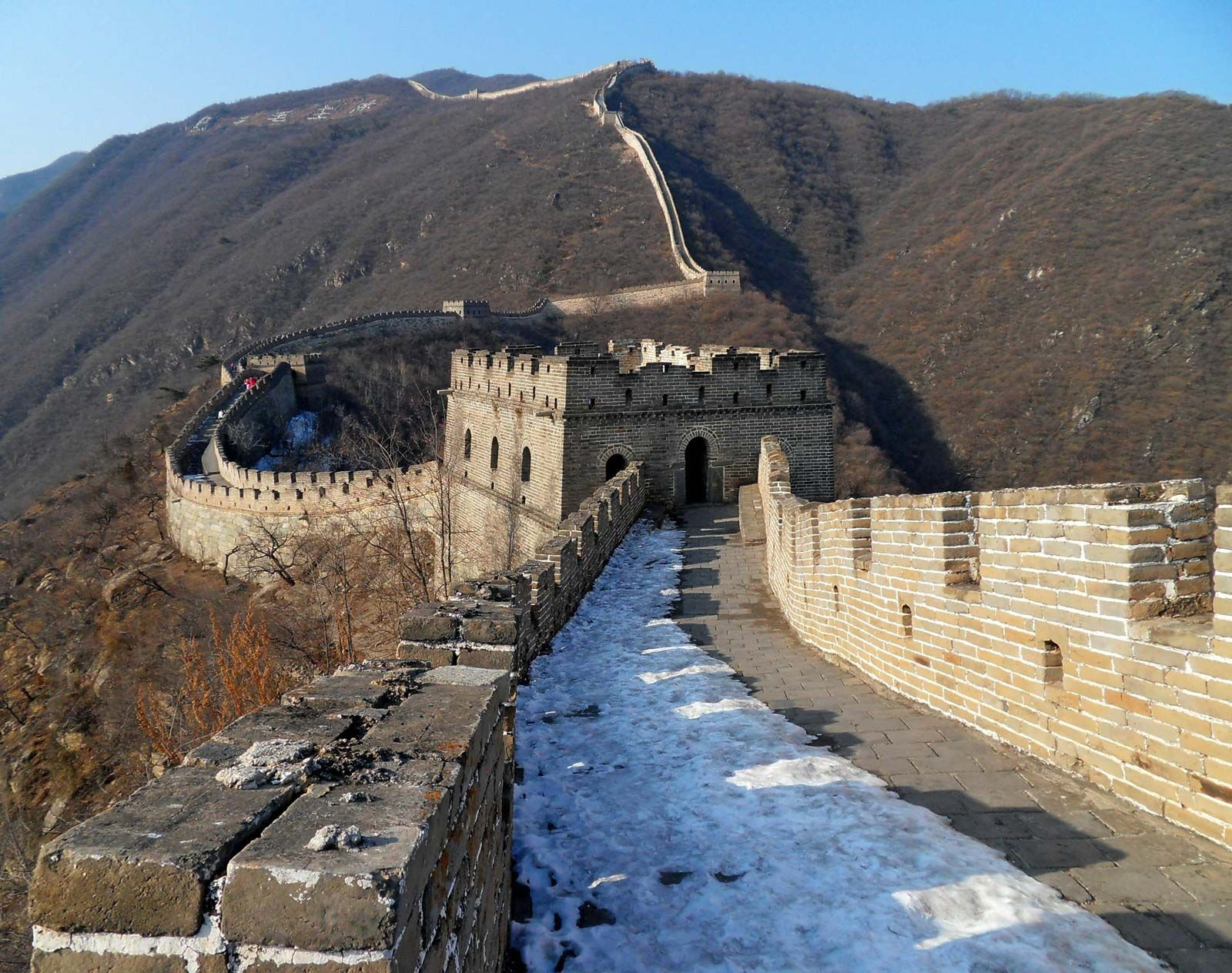The Great Wall of China, a symbol of ancient Chinese civilization, stretches across vast landscapes, but pinpointing its exact location requires understanding its historical development. While today, when asking “where is the Great Wall of China?”, many think of the sections near Beijing, like Mutianyu, the wall’s origins are far more complex and geographically diverse, rooted in centuries of construction by various states. The initial walls weren’t a single, unified structure but rather separate fortifications built by individual kingdoms to defend their territories.
As early as the 7th century BCE, the state of Chu began constructing what was known as the “Square Wall,” a permanent defensive system located in the northern part of its capital province. This marked one of the earliest attempts at large-scale wall building in ancient China. Following Chu’s example, from the 6th to the 4th centuries BCE, other states also embarked on similar projects.
In the southern part of the Qi state, an extensive perimeter wall was gradually developed. This Qi wall cleverly integrated natural features, utilizing existing river dikes, newly constructed bulwarks, and impassable mountain terrain. Predominantly made of earth and stone, the Qi wall stretched to the shores of the Yellow Sea, demonstrating an understanding of strategic geographic boundaries for defense. The Zhongshan state also constructed its own wall system to protect against invasions from the Zhao and Qin states to its southwest.
The Wei state implemented a dual-layered defensive strategy with two main wall systems: the Hexi and Henan walls. The Hexi Wall, meaning “West of the [Yellow] River,” was specifically built to defend against the Qin state and nomadic groups from the west. King Hui of Wei initiated its expansion from existing dikes along the Luo River, starting near Xiangyuan Cave, east of Mount Hua, and extending to Guyang, now part of Inner Mongolia Autonomous Region. The Henan Wall, meaning “South of the River,” was designed to protect Daliang, the Wei capital, now known as Kaifeng.
Further wall constructions were undertaken by the Zheng state, later rebuilt by the Han state after conquering Zheng. The Zhao state completed both a southern and a northern wall, with the southern wall primarily aimed at defense against the Wei state. Even the Yan state prepared two distinct defensive lines: the Northern Wall and the Yishui Wall. These were crucial for defending against northern groups like the Donghu, Linhu, and Loufan, as well as the Qi state to the south. The Yishui Wall, an extension of the Yi River dike, served as a defense against Qi and Zhao, Yan’s main rivals, stretching from southwest of Yi City to south of Wen’an.
In 290 BCE, the Yan state erected the Northern Wall along the Yan Mountains. This wall started in the northeast near Zhangjiakou in Hebei, crossed the Liao River, and reached the ancient city of Xiangping, modern Liaoyang. This marked the last major segment of wall construction during the Zhanguo or Warring States period.
 The Great Wall of China at Mutianyu, near Beijing, showcasing its current location.
The Great Wall of China at Mutianyu, near Beijing, showcasing its current location.
The landscape of wall building changed dramatically when Shihuangdi, the first Qin emperor, unified China in 221 BCE. Recognizing the former state walls as impediments to internal administration, he ordered their removal. However, to protect the newly unified empire from northern nomadic groups like the Xiongnu, Shihuangdi commissioned General Meng Tian to connect the existing walls of Qin, Yan, and Zhao. This ambitious project, starting around 214 BCE and lasting a decade, aimed to create the “10,000-Li Long Wall,” involving hundreds of thousands of laborers. While this Qin dynasty wall eventually fell into disrepair after Shihuangdi’s death, it represents a crucial step towards the unified Great Wall we recognize today.
In conclusion, when considering “where is the Great Wall of China,” it’s essential to understand that its location isn’t singular. Historically, it was a network of walls scattered across northern China, built by various states over centuries. The sections tourists visit today, often near Beijing, are largely remnants and reconstructions from later dynasties, built upon the foundations laid by these early defensive walls. The true location of the ‘early Great Wall’ is thus a historical tapestry woven across numerous regions and timelines, reflecting the evolving geopolitical landscape of ancient China.
